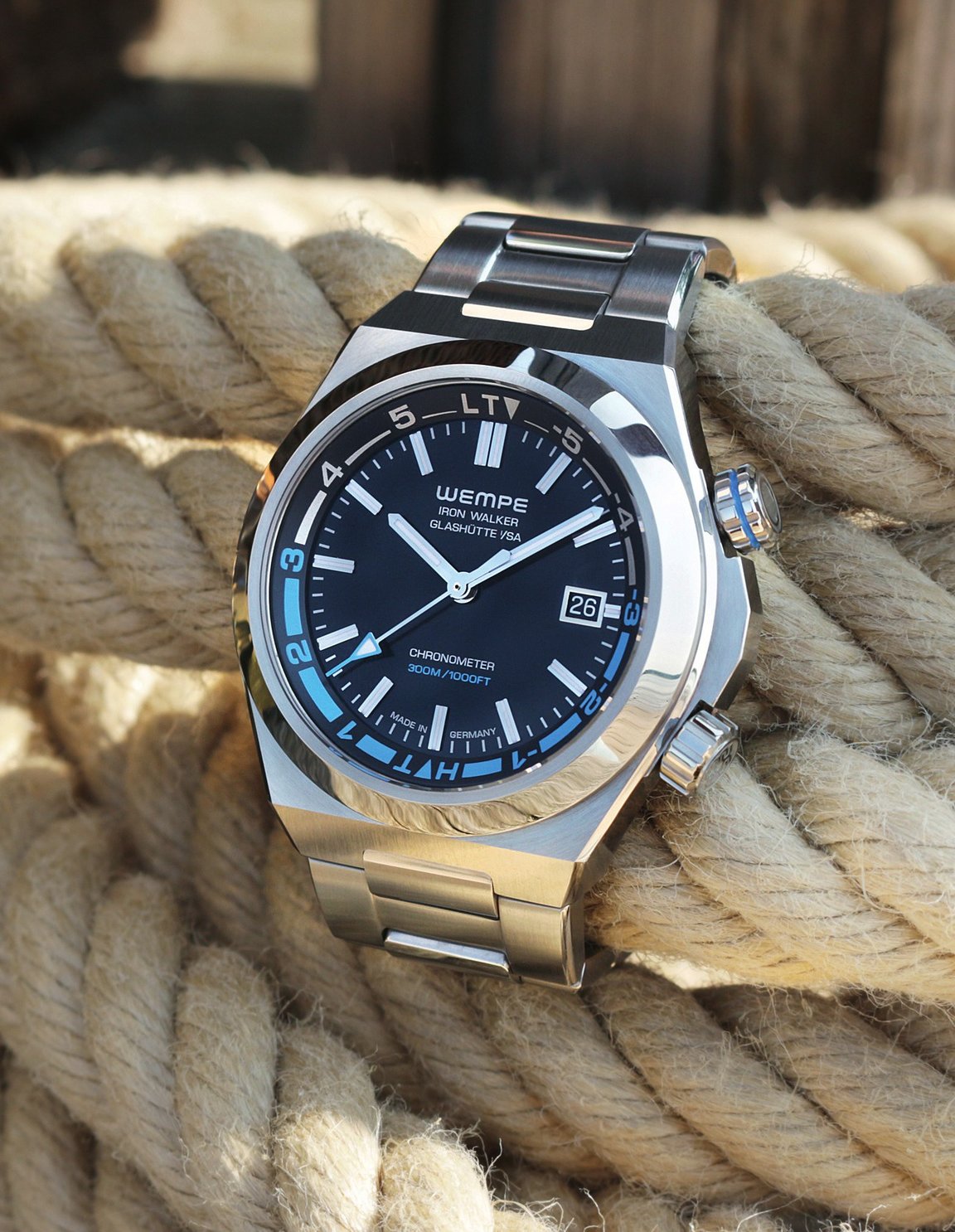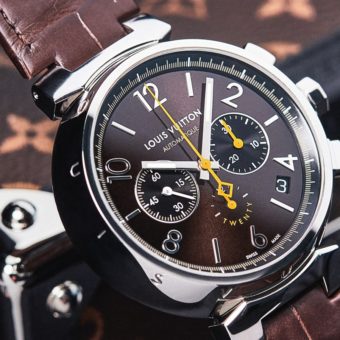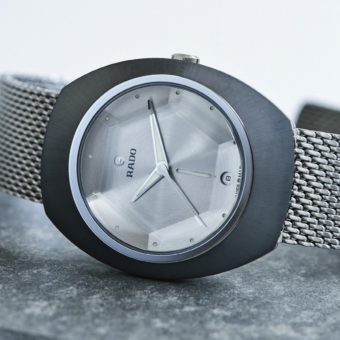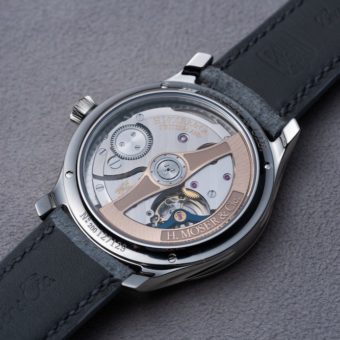This article was originally published in the May/June 2022 Issue of the WatchTime print magazine. Photos by Sinn, Wempe and Martina Richter.
According to the tide calendar, high tide will reach its peak shortly before 10 o’clock this morning. That would be a good time for a swim. It’s late summer and the water in the Wadden Sea is still warm. Or maybe you would rather sail your boat out to a sandbank and take a nice hike on the mudflats when the tide is low?
While we refer to “high” and “low” tide, these terms actually denote the periods of time when the water is in motion. The difference in height between the two phases is called the tidal range, which varies greatly around the globe. Along the coasts of the North Sea, where the Wadden Sea is located, the tidal range measures between 2 and 3 meters (6-1/2 to almost 10 feet). When sailing or hiking along coasts where the tidal range is significantly large, it’s important to know the times of high and low tide. Consulting local tide tables is mandatory and checking your watch is essential. Watches with tide displays are very practical, but also rather rare, which is surprising because they are remarkably simple to use — if you have a tide calendar to consult.
Like the majority of timepieces made by Frankfurt-based manufacturer Sinn Spezialuhren, its tide watch, the 240 St GZ, prioritizes functionality. This is obvious from the very first glance at the dial. The face has strong contrasts, and the time display and the tide function both glow brightly in the dark.

The Sinn’s stainless-steel case embodies no-frills styling. With its matte finish and slightly elliptical shape, the monobloc case feels as smooth as a pebble that’s been finely polished by sand and surf over the years. We were a bit surprised to discover that this timepiece, which is equipped with maritime functions, is water resistant only to 100 meters, especially given Sinn’s expertise in building a wide variety of highly pressure-resistant dive watches. Perhaps this one’s shallow water tightness is due to the fact that this model is descended from a watch with a pilots’ bezel. Or maybe it’s due to the special shape of the case or to the case’s slim construction, which cannot resist greater pressure. Then again, is water tightness so very important? Not really; pressure resistance to 10 bar surely is sufficient for hiking on mudflats, swimming and sailing.
On the other hand, the tide watch from Wempe Glashütte i/SA, the Iron Walker Tide Automatic, is pressure resistant to 30 bar in accordance with the standard for dive watches. Strong pressure resistance isn’t surprising here because this watch belongs to the still-young series of Iron Walker models, which debuted in 2020 with a burly name that refers to their muscular ambitions. The Iron Walker isn’t very much larger in diameter than the watch from Sinn, but Wempe’s model is thicker than Sinn’s, partly because of its modern case-band integration and the angular flank at the 3, which is adapted from the dive watch. These stately dimensions assure that the Iron Walker Tide lives up to its name and give it an appearance that perfectly matches its maritime attitude. Contrasts play a major role on the dial of the Iron Walker Tide, although occasionally reflections are caused by the facets on the indexes and hands and by the iridescence of the black dial. The indexes and hands glow a soft blue in the dark, so these indicators aren’t quite as vividly visible as those on the Sinn. Wempe’s tide function is not illuminated at night and the flange around the dial is quite steep, which sometimes makes the blue markings poorly legible in the shadows.

Two large and easy-to-grasp crowns are screwed into the flank of the Wempe’s case on either side of a protruding protector. Like the winding button on an ordinary watch, the lower crown at the 4 is used for manual winding, operating the date quickset and repositioning the hands. The upper crown makes the Iron Walker Tide an unusual timepiece because this button is used to operate the tide function. The blue groove in the wide vertical fluting on this crown gives a first indication of the special maritime function because it matches the blue markings on the inner rotating bezel. These markings refer to the three hours before and after the highest water level, while a minus sign precedes each integer for the hours prior to the peak of high tide. The minus marks begin immediately after the lowest water level, but here they are in silver rather than blue. The three hours prior to the lowest water level are also marked in silver.
Blue is also used to symbolize water on the Sinn watch. The water level is indicated by a circular ring with a pair of tapering arcs. High water is shown by the broad blue part of the ring, and low water by the narrow blue arcs. The upper crown at the 2 is operated in the same way as its counterpart on the Wempe watch, except that Sinn’s crown cannot be screwed shut. You might not be so concerned about the lower crown for manual winding, date quickset and hand setting, but you might ask yourself if the nonscrewed crown for setting the tide function could move too easily and accidentally reposition the inner rotating bezel, thus misrepresenting the tide situation. This concern was unfounded: nothing went wrong during our test, but we would still prefer a screwed crown.

The rotating blue inner bezel on Sinn’s watch shows the water level at a given location and can be read directly for the current tide cycle, i.e., for the interval from one high tide to the next. Each cycle lasts 12 hours and 25 minutes, and this interval is shown on the rotating bezel. The corresponding time can be read fairly accurately on the opposite side of the dial, thanks to the fine scaling. Each stroke corresponds to 3 minutes. High tide and low tide occur at different times of day at different coastal locations, so after the rotating bezel has been properly preset, it can only show the tide at one specific location. Correct presetting requires consulting a valid tide table, which is published annually for important locations, such as harbors and their approaches, coastal stations, islands, etc.
After you’ve consulted the tide table and found the time of the next high tide, you rotate the blue bezel on the Sinn watch until the triangular “HW1” marker points to this time on the dial’s peripheral scale. If high tide will arrive today at 9:59 a.m., you set your watch accordingly. The current water level can be read immediately because the hour hand points to the water’s height as shown by the blue rotating ring. Every other water level is also immediately visible — from the present moment up to the next high tide and the one after that, which is marked with “|2.” The next low water level, which will happen at 4:10 p.m. today, is marked with “|NW.” (“NW” stands for Niedrigwasser, which means “low water” in German.) The time of the next high tide (10:24 p.m.) is indicated by the position of the “|2” mark. If you move the triangular “HW1” marker to this position at this time, i.e., when the hour hand reaches the “|2” position at 10:24 p.m., you will again have a full view of the next tide cycle. Sinn nevertheless recommends that you occasionally match the settings on the watch to the data in a tide table.

The tide display on the Wempe watch is not quite as convenient, but useful nonetheless. The rotating inner bezel shows how much time remains until the next high tide and the next low tide. You rotate the upper crown with the blue groove until the triangle of the “HT” (High Tide) marker points to the time of the next high tide, which will happen at 9:59 a.m. today. Similar to the Sinn watch, the hour hand now points to the tide phase and shows how many hours remain until the next high tide as well as how many hours remain until the next low tide (“LT”). Only after low tide has been reached at 4:10 p.m., do you reset the triangular “HT” marker on the bezel to show the next high tide at 10:24 p.m. Unlike the situation with the Sinn watch, you must consult a tide table each time you reset the indicator because there is no “|2” mark on this timepiece. Wempe includes a tide calendar with every Iron Walker Tide.
The benefit with the Iron Walker Tide, however, is that the inner rotating bezel, which is operated via a screw-down crown, offers greater security through its simple display of a complex phenomenon. High and low tide follow each other regularly, but they don’t fit into our 24-hour rhythm because they shift with a 50-minute daily discrepancy. The screw-down crown prevents accidental resetting of the inner rotating bezel and also ensures the pressure resistance of 30 bar adopted from the Iron Walker dive watch.

ETA’s automatic Caliber 2892-A2 caliber keeps time with a level of quality shown by an engraving on the fully threaded screw-down back. The Iron Walker Tide is a German chronometer tested according to ISO 3159 at the Glashütte Observatory, although its rate values deserve some criticism because they are entirely in the “loss” column. The same censure applies to Sellita’s automatic Caliber SW220-1 inside the Sinn 240 St GZ, which loses a few more seconds per day behind the case’s closed metal back.
To sum things up, each timepiece has its advantages and its disadvantages. The tide function on the Sinn model is intuitive, easy to operate and, like the time, perfectly legible, even in the dark. The tide function on Wempe’s model shows only the current tide cycle, but the Iron Walker’s overall design is more in keeping with the maritime attitude of the timepiece.
Wempe Iron Walker Tide Automatic Specs:
Manufacturer: Wempe Glashütte i/SA, Herbert-Wempe-Platz 1, 01768 Glashütte, Germany
Reference number: WI210001
Functions: Hours, minutes, central seconds, day of the week, inner tide ring, two screw-down crowns
Movement: ETA 2829-A2, automatic, certified German chronometer according to ISO 3159, 28,800 vph, 21 jewels, Glucydur balance, Nivarox hairspring, Bipartite index (Etachron) fine adjustment, Incabloc shock absorption, 50-hour power reserve, diameter = 25.6 mm, height = 3.60 mm
Case: Stainless-steel case, sapphire crystal above dial, water resistant to 300 m
Bracelet and clasp: Stainless-steel bracelet, one-sided folding clasp with safety catch
Rate results: Average rate in seconds per day
Dimensions: Diameter = 44.76 mm (from 3 to 9), 40.33 mm (from 6 to 12), 42.78 mm (from 2 to 8); lug width = 24 mm (integrated); height = 11.79 mm; weight = 190.0 g
Price: $3,805
Sinn 240 St GZ Specs:
Manufacturer: Sinn Spezialuhren GmbH, Wilhelm-Fay-Strasse 21, 65936 Frankfurt am Main, Germany
Reference number: 240.011
Functions: Hours, minutes, central seconds, day of the week, date, rotating inner tide ring with indication of high and low tide
Movement: Sellita SW220-1, automatic, 28,800 vph, 26 jewels, nickel gold-plated balance, Nivarox hairspring, bipartite index (Etachron) fine adjustment, Incabloc shock absorption, 38-hour power reserve, diameter = 25.6 mm, height = 5.05 mm
Case: Bead-blasted stainless-steel case, sapphire crystal above dial that is antireflectively treated on both sides, water resistant to 100 m
Bracelet and clasp: Stainless steel, bead-blasted, one-sided folding clasp with safety catch
Rate results: Average rate in seconds per day
Dimensions: Diameter = 43.26 mm (from 3 to 9), 41.25 mm (from 6 to 12), 45.91mm (from 2 to 8); lug width = 22 mm; height = 11.07 mm; weight = 110.0 g (with leather strap)
Variations: With leather strap ($1,920)
Price: $2,090
To learn more about Sinn, click here, to learn more about Wempe, click here, and to subscribe to the WatchTime print magazine, click here.







I have the Iron Walker automatic and a Sinn 104 R, both are great watches with much different appearances. These new offerings have unique applications, I’d buy either brand, but not necessarily these models.